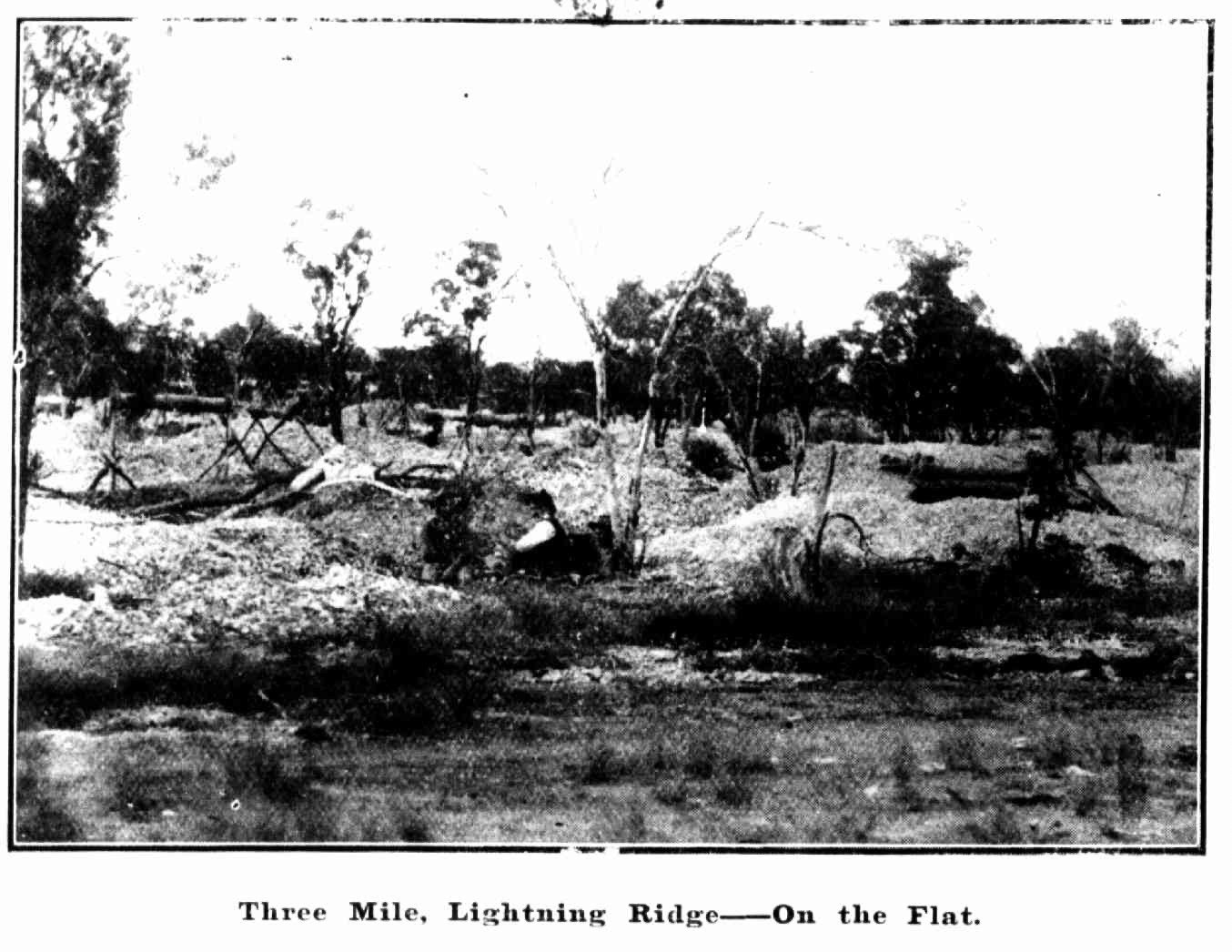Three Mile Flat
Three Mile Flat (also Nettleton’s Flat) is located on the low ground east of the Three Mile ridge. It was one of the most consistent and productive areas on the field, noted for its rich but shallow opal bearing ground, typically worked at depths between 10 and 24 feet. The field produced a wide range of opal, from pale potch to very fine black opal. According to Stuart Lloyd, its total production had reached £157,000 by 1967.
The first significant rush to the Flat occurred around 1908, and by 1910 the broader Three Mile field was said to have up to a thousand men at work. The patch here was considered by some, including John Landers, to be the richest on the field, worked by a mix of itinerants and more established miners such as Joe Potts, Mick Cullen, George Bailey, Darkie Anderson, and the Dominick brothers (Albert and Jack). The Bishop family also had one of the best claims, along with Jack Baker and “Tingha Bill.”
Unlike the more developed Old Town, the settlement at Three Mile Flat was informal, comprised of makeshift huts and tents. A cluster of shops and services developed during the boom years. By 1909, estimates suggested between 500 and 700 men were working the area. A post office agency operated from 1912, and a public school was opened with 38 children enrolled, making it the second school on the Lightning Ridge fields.
The township that sprang up on the Flat was known as Nettleton, as it appears in postal and education records. For a time, Nettleton rivalled the Old Town in population and activity. However, by 1912 the government began consolidating businesses and dwellings into the newly surveyed New Town, roughly equidistant between the two settlements. Commercial licenses at the Flat were not renewed, and shopkeepers, including Norris & Vause, W. Kirkpatrick, Hawkins, and Dorrington were instructed to move.
Though miners followed the rush to newer ground and residents relocated to New Town, Three Mile Flat continued to produce opal for many years.
Article: Edited by Russell Gawthorpe. LRHS research compiled by Len Cram and Barbara Moritz. Sources: The Occurrence of Opal at Lightning Ridge and Grawin, with Geological Notes on County Finch, J. W Whiting & R. E. Relph, 1958, p. 10; The Opal Book, Frank Leechman, 1961, p. 67; The Lightning Ridge Book, Stuart Lloyd, 1967, pp. 8, 35, 37, 41, 58-59, 79, 109; Lightning Ridge - The Home of the Black Opal: Unique to the World, Gan Bruce, 1983, pp. 60-61, 70.

